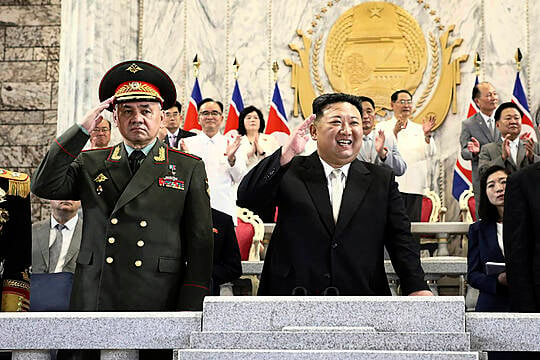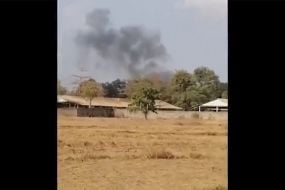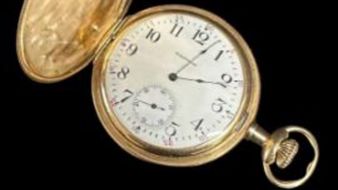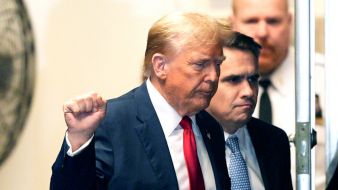After a year and a half of fighting in Ukraine, Russia needs to replenish its supplies of ammunition so, as well as ramping up its domestic arms production, Moscow is turning to an old ally with a vast arsenal – North Korea.
Estimates say the reclusive and isolated Asian country has tens of millions of artillery shells and rockets that could give a huge boost to the Russian army.
US officials expect North Korean leader Kim Jong Un to visit Russia in the coming days to seal a possible deal on munitions transfer with President Vladimir Putin.
That would be a remarkable reversal from the 1950-53 Korean War, when the Soviet Union provided the communist North with weapons and ammunition.
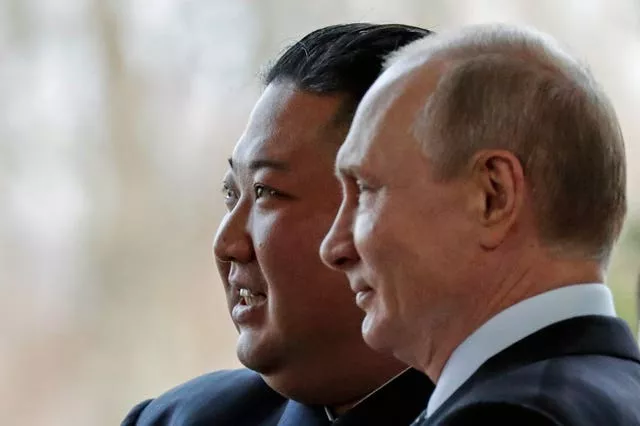
Alexander Gabuev, head of the Carnegie Russia Eurasia Centre, said: “We know that Russian Defence Minister Sergei Shoigu has visited recently, for artillery shells predominantly, and most likely that will be discussed between Putin and Kim Jong Un.”
Sergei Shoigu became the first Russian defence chief to visit North Korea since the 1991 collapse of the Soviet Union.
Images of him at a massive military parade in the capital of Pyongyang in July, alongside Mr Kim and the medal-laden North Korean military brass, was a strong sign of a vigorous effort by Moscow to reach out to the North. Mr Shoigu said joint military drills are possible.
Asked about a possible visit by Mr Kim and a deal that would see North Korean arms supplies to Russia, Kremlin spokesman Dmitry Peskov refused to comment.
But he emphasised that Moscow cherishes ties with Pyongyang, adding: “North Korea is our neighbour, and we will further develop our relations without looking back at other countries’ opinion.”
Mr Kim made his first visit to Russia in 2019 and held talks with Mr Putin that included pledges of closer co-operation but were not followed by any visible breakthroughs.

While the bulk of the Korean People’s Army arsenals are dated, their enormous size would offer the Russian military a potential key lifeline amid Europe’s largest land conflict since the Second World War.
Hong Min, an analyst at Seoul’s Korea Institute for National Unification, said Russia could seek to establish North Korea as a “rear base” for its war efforts, providing a massive flow of munitions.
“Russia is hoping that North Korea could swiftly establish support channels to provide it with war materials like ammunition, bombs and other supplies,” he said.
The US said North Korea sold some munitions to Russia’s private military contractor, Wagner, in November.
Both Russian and North Korean officials have denied that Pyongyang has shipped any weapons or munitions to Russia or intends to do so.
US officials have cast Moscow’s reach for North Korean weapons as a reflection of Russian military problems. White House national security adviser Jake Sullivan said the quality of North Korean weapons is an “open question”.
“It says a lot that Russia is having to turn to a country like North Korea to seek to bolster its defence capacity in a war that it expected be over in a week,” he said.
While Washington has warned Pyongyang against sending weapons to Russia, which would violate a United Nations embargo on any arms shipments to and from North Korea, observers say there is little the US could do in response.

They note that Moscow could share advanced nuclear, missile and submarine technology with Pyongyang in exchange for arms supplies, a move that could embolden Mr Kim and raise major threats to regional security.
“The United States and its allies have limited policy options in addressing this new challenge,” the Washington-based Centre for Strategic and International Studies said in an analysis.
While the North’s enormous stockpiles could boost the Russian war effort, Moscow has imported drones from another ally, Iran, that have played a significant role in the fighting.
Russia has used the Shahed exploding drones to strike Ukraine’s infrastructure for more than a year.
After the initial surprise, Ukrainian air defences have honed their skills in engaging them, but the cheap and simple drones that have a range exceeding 930 miles (1,500km) continue to inflict significant damage.
Russia has reportedly bought a production licence from Iran and built its own factory to assemble the drones and churn out thousands of them a year.
Iran is expected to initially provide the materials and technology, with the plant gradually shifting to domestically produced components.
Russian arms manufacturers have compensated for at least some of the equipment losses in the conflict and developed some new products, including satellite-guided gliding bombs and other precision weapons to fight back against Ukraine’s summer counteroffensive.
Early in the war, broad use of drones by Ukraine inflicted heavy losses on Russian forces and played a significant role in Moscow’s military setbacks. Russian officials acknowledged they had not paid enough attention to drones before the war and vowed to fill the gap quickly.
One type of mass-produced exploding drone that made a visible impact is the Lancet, capable of lurking over the battlefield before hitting its target. Cheap and compact, it has become prolific, allowing the Russian military to strike Ukrainian tanks and artillery systems on a wide scale.
Russia has increasingly used another new asset in recent months: gliding aerial bombs. With a pair of winglets and a satellite navigation module, old Soviet-made bombs have been transformed into highly efficient “smart” weapons.
They have a range of up to 37 miles (60km) and allow the Russian air force to step up attacks on Ukrainian forces along the front line without putting warplanes at risk.

Russia has adapted 1,100lb (500kg) bombs, using them to fend off the Ukrainian counter-offensive.
It has worked to design a similar conversion for a 3,300lb (1,500kg) bomb, reportedly using it for the first time this month. Transformed into a gliding bomb, it is reportedly precise to 16ft (5m) and leaves a 50ft (15m) crater – a powerful weapon against Ukrainian military assets.
Another addition to the Russian arsenal is the Vikhr anti-tank missile used by Russian helicopter gunships. It has an extended range that allows pilots to take out Ukrainian armour while staying out of reach of air defences, and has seen wide use during the summer.
The Royal United Services Institute said in an analysis: “The use of attack aviation has posed a consistent challenge for Ukrainian forces throughout the counter-offensive.”
While developing new munitions, Russian manufacturers also bolstered production of tanks and other weapons, and the military has increasingly tapped its storage bases of thousands of armoured vehicles dating to the Cold War. Some have been upgraded with protective shields and other equipment to increase their survivability.
Dmitry Medvedev, the deputy head of Russia’s Security Council, has said Russia will produce 1,500 battle tanks in 2023.
“Conveyor belts of our military industrial complex are working in three shifts, and it will produce as many weapons as needed to efficiently protect the Fatherland,” he said.
